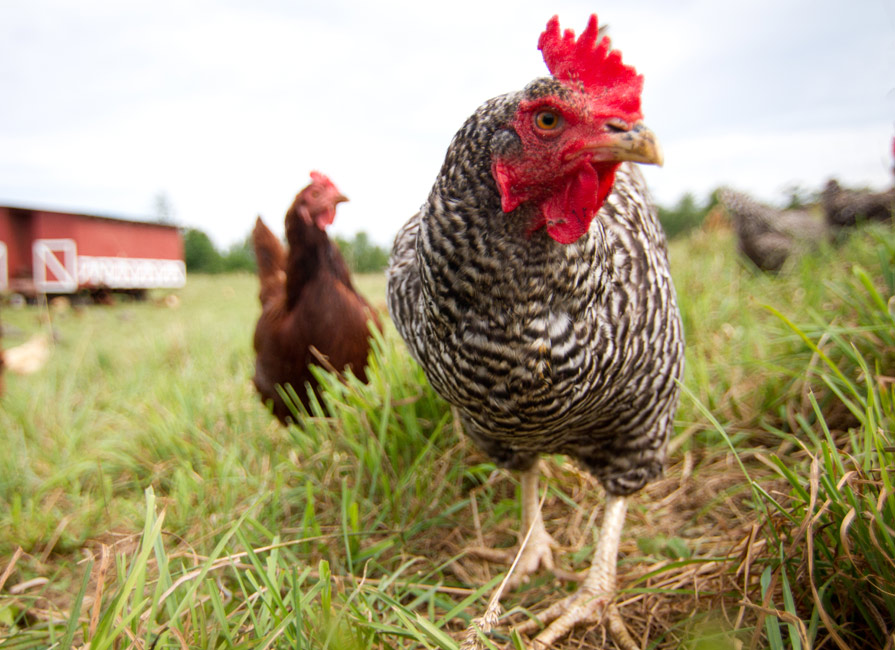One of the key attractions of our Certified Regenerative by AGW program is its practical…

Chicken On Grass
Pastured chickens will obtain a certain amount of nutrients from the pasture, as well as insects and other small invertebrates, and from small seeds, fruits and berries. Although there is little consensus about exactly how important each of these sources of nutrition is, scientists agree that the potential contribution of pasture (grass, insects and worms) is highly variable and generally very small. From a welfare and productivity perspective, it is therefore vital for pastured poultry farmers to supply a well-balanced ration as the primary source of nutrition for their birds.
Nutritional benefits of pasture
Pasture consumption is influenced by a number of factors, including the amount of time spent outdoors, foraging behavior, plant species, stage of growth, palatability and nutritional content of the plants, and the nutritional needs of the birds. Breed may also be important, as research shows that slow-growing breeds adapted to outdoor conditions will generally utilize forage more effectively.
The nutritional quality of pasture is related at least in part to the plant species composition. Pastures used by many free-range poultry flocks will have been established for use by cattle or sheep and may therefore contain species that are not ideal for poultry production. If poultry consume largely grass, the nutritional value derived is likely to be relatively poor. While it would provide some energy and fiber, the protein contribution would be low at less than 5% of the total requirement. However, birds that are allowed to freely range will also consume a higher proportion of insects and seeds than those
that have limited access to forage or a small ranging area. Research shows that pasture intake promotes growth by improving the consumption of the grain-based feed, even though the intake of forage dry matter may be low.
Additional forages
Providing chickens with additional forages to supplement their diet (and enhance the range) can have positive welfare impacts. Feeding pea and maize silages or loose vegetables, for example, significantly reduced mortality, feather pecking (including severe pecking) and improved plumage quality of layers. Providing straw as forage and feed in mash form has also been shown to reduce feather pecking.
Nutritional deficiencies
Many nutritional deficiencies in poultry show similar symptoms, such as reduced growth, poor feathering and weakness, so it can be difficult to determine the precise deficiency. Diet analysis, examination of the management system and necroscopy may be necessary for accurate diagnosis. Some nutritional deficiencies are temporary and reversible upon diet correction.
KEY DIET CATEGORIES
Major nutrients water; energy; protein; essential amino acids (especially lysine and methionine); ssential fatty acids
Major minerals calcium; potassium; phosphorus; magnesium; sodium; chloride
Trace elements include: iodine; selenium; iron; zinc; copper; manganese
Vitamins A, D, E, K and B12; folic acid; thiamin, riboflavin; niacin; pantothenic acid; pyrodoxine; biotin; choline
Article adapted from Farm Health Online. For more information about practical, science-based advice on high-welfare livestock management, visit farmhealthonline.com.


